Croton Plant
- November 6, 2023
- 0 comment
The Croton plant, scientifically known as Codiaeum variegatum, is a popular and striking tropical houseplant appreciated for its vibrant and colorful foliage. Native to Southeast Asia and the western Pacific, Croton plants have become a favorite choice for indoor and outdoor ornamental purposes.

What sets this plant apart are its eye-catching, glossy leaves that come in a stunning array of colors and patterns, including red, yellow, orange, green, and combinations thereof. Crotons are relatively easy to care for, requiring bright, indirect light, regular watering to keep the soil consistently moist, and occasional misting to maintain the desired humidity levels.

They thrive in warm, tropical conditions and can be an excellent addition to your home or garden if you’re looking to add a pop of color and exotic flair. Keep in mind that Croton plants are not cold-tolerant and should be protected from drafts and extreme temperature fluctuations.
| Characteristics | Description |
| Scientific Name | Codiaeum variegatum |
| Common Names | Croton, Garden Croton, Joseph’s Coat |
| Family | Euphorbiaceae |
| Origin | Southeast Asia and the western Pacific |
| Type | Evergreen tropical shrub |
| Mature Height | Typically 3 to 6 feet (0.9 to 1.8 meters) indoors, can grow taller outdoors |
| Foliage | Broad, leathery leaves with striking colors and patterns |
| Leaf Colors | Red, yellow, orange, green, and variegated combinations |
| Light Requirements | Bright, indirect sunlight |
| Watering | Keep soil consistently moist but not waterlogged; reduce watering in winter |
| Humidity | Thrives in moderate to high humidity levels |
| Temperature | Prefers warm, tropical conditions; not cold-tolerant |
| Growth Rate | Moderate |
| Propagation | Typically by stem cuttings |
| Toxicity | All parts of the plant are toxic if ingested; handle with care |
| Maintenance | Pruning to shape and remove dead leaves; occasional misting for humidity |
| Pests | Susceptible to mealybugs, spider mites, and aphids |
| Disease | Can be affected by root rot if overwatered |
| Indoor/Outdoor Use | Suitable for both indoor and outdoor landscaping |
| Additional Notes | Croton plants add vibrant and exotic aesthetics to gardens or indoor spaces but require attention to their light and humidity needs, as well as protection from cold temperatures. |
Botanical Beauty of “Croton Plant”
The Croton plant, known scientifically as Codiaeum variegatum, is a botanical marvel that captivates with its stunning foliage. Hailing from the lush landscapes of Southeast Asia and the western Pacific, this plant is renowned for its vivid and variegated leaves. Croton plants showcase a kaleidoscope of colors, including brilliant shades of red, yellow, orange, green, and captivating combinations of these hues. Its glossy, leathery leaves are a testament to the diverse beauty that the plant kingdom has to offer. The Croton’s botanical beauty makes it a cherished ornamental addition to homes and gardens around the world, instantly injecting life and vibrancy into any space.

Woodland Elegance

In the realm of plant diversity, the Croton plant stands out with its woodland elegance. Its graceful, arching branches and the dazzling array of leaves evoke the essence of a tropical paradise. These plants are evergreen, ensuring that their allure remains year-round. Whether you choose a single Croton as a statement piece or create a lush forest of them, their elegance and charm add an undeniable touch of sophistication to any garden or interior space.
Ecological Importance
Beyond their aesthetic appeal, Croton plants serve an essential ecological role in their native habitats. They provide shelter and sustenance to various wildlife, including insects and birds. The colorful foliage attracts pollinators, aiding in the reproduction of other plants. As a part of the diverse ecosystems in their native regions, Crotons contribute to the overall health and balance of these environments.
Cultivation and Conservation
The cultivation of Croton plants has extended beyond their native range, thanks to their popularity as ornamental plants. However, it is crucial to approach their cultivation with care, as these tropical beauties require a specific set of environmental conditions. While they thrive indoors in many parts of the world, they also adorn gardens in warmer climates. In the wake of their growing popularity, conservation efforts are underway to protect wild Croton populations, as overharvesting can pose a threat to their existence in their natural habitats.
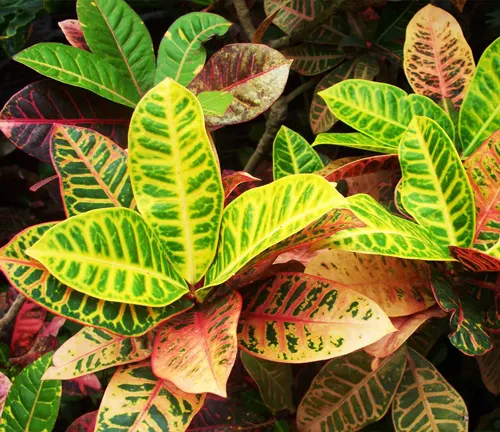
Fragrance
While Croton plants are celebrated primarily for their striking appearance, some varieties boast a subtle, sweet fragrance. The scent may not be overpowering, but it adds an extra dimension to the overall sensory experience of having Crotons in your space. The combination of visual beauty and a delicate fragrance creates an enchanting ambiance that is both calming and invigorating.
Soil Stabilization
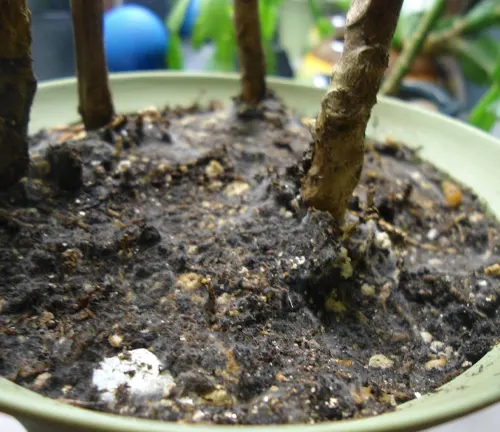
Croton plants contribute to soil stabilization with their robust root systems. In regions prone to erosion, the extensive root network of these plants helps prevent soil loss and degradation. Their presence is particularly valuable in areas where preserving the integrity of the soil is crucial to maintaining the local ecosystem.
Common Uses
Croton plants have a wide range of uses, from ornamental to practical. They are favored as houseplants, interior décor elements, and landscaping features. Their diverse leaf patterns and colors make them ideal for adding a pop of visual interest to any setting. Additionally, Croton leaves are sometimes used in traditional medicine for their potential healing properties. However, it’s essential to exercise caution, as all parts of the plant are toxic if ingested.

Benefits
Apart from their visual appeal, Croton plants offer several benefits. They are effective in improving indoor air quality by filtering out pollutants and increasing humidity levels. Moreover, their presence can contribute to the overall well-being of those who tend to them, serving as a source of relaxation and stress relief. In gardens, they add a layer of biodiversity and charm that attracts both nature and human admirers alike.
Different Species
Codiaeum variegatum ‘Petra’
Known for its bright red, yellow, and green leaves, this cultivar is one of the most recognizable Croton varieties.
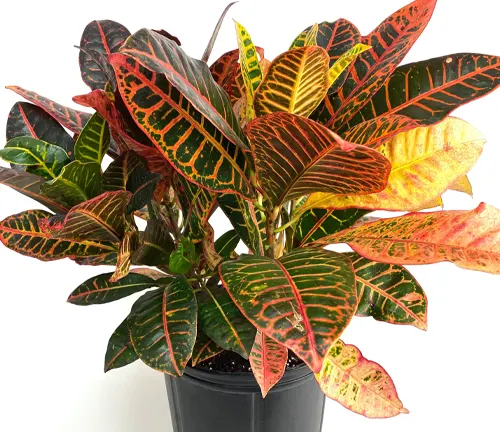
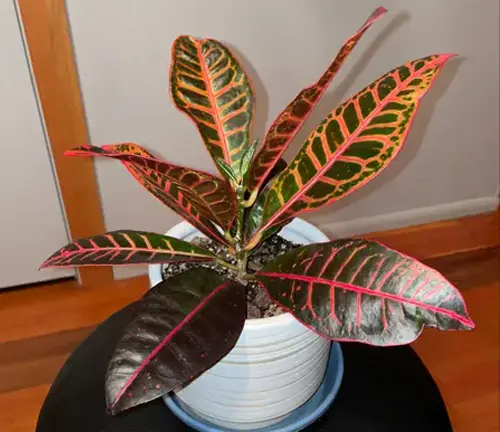
Codiaeum variegatum ‘Norma’
‘Norma’ Crotons feature colorful, variegated leaves with a mix of red, orange, and yellow hues.
Codiaeum variegatum ‘Mammy’
This cultivar is characterized by its predominantly red foliage, making it a bold and striking choice.
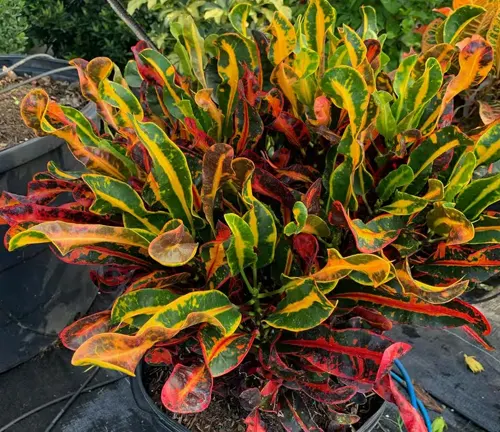
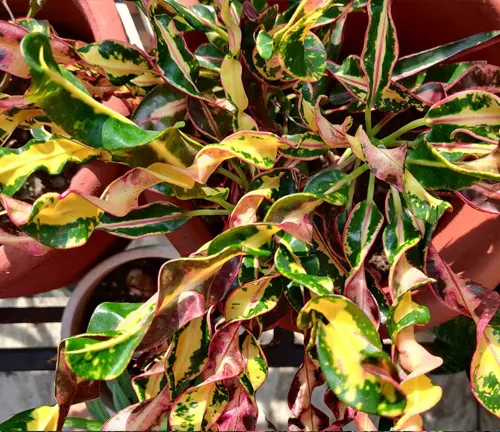
Codiaeum variegatum ‘Spirale’
The ‘Spirale’ Croton has unique spiral-shaped leaves that set it apart from other varieties.
Codiaeum variegatum ‘Stoplight’
As the name suggests, ‘Stoplight’ Crotons have leaves that resemble traffic lights, with a mix of red, yellow, and green colors.
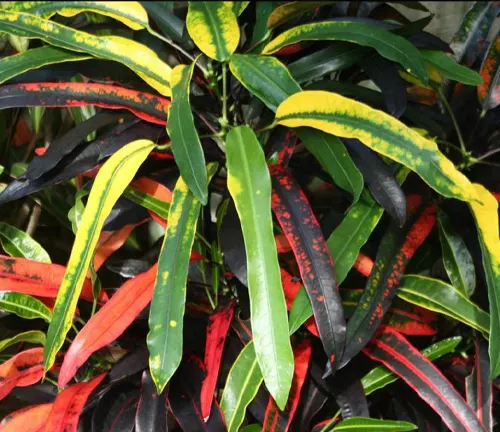

Codiaeum variegatum ‘Gold Dust’
This cultivar has green leaves speckled with golden-yellow spots, creating a vibrant and eye-catching appearance.
Codiaeum variegatum ‘Oakleaf’
‘Oakleaf’ Crotons have elongated, oakleaf-shaped leaves with intricate patterns and colorful markings.
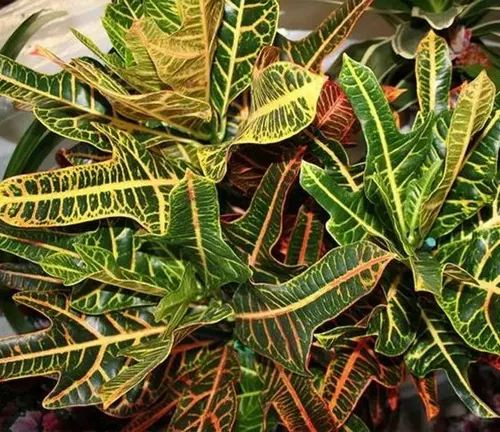

Codiaeum variegatum ‘Andreanum’
These Crotons feature elongated, wavy-edged leaves with red, yellow, and green colors.
Codiaeum variegatum ‘Zanzibar’
Also known as the Zanzibar Croton, this variety has lance-shaped, leathery leaves with various colorful patterns.


Codiaeum variegatum ‘Bush on Fire’
‘Bush on Fire’ Crotons display fiery red and orange hues, adding a touch of warmth to your garden or interior space.
Codiaeum variegatum ‘Aucubaefolia’
These Crotons have leaves with aucuba-like patterns, typically with yellow speckles or splotches.

Frequently Asked Questions (FAQs)
- How do I care for my Anthurium plant?
Anthuriums thrive in indirect, bright light and require regular watering to keep the soil consistently moist. They prefer high humidity and well-draining soil. - How often should I water my Anthurium?
Water your Anthurium when the top inch of soil feels dry. Typically, this means watering every 1-2 weeks, but it can vary based on environmental conditions. - Can I grow Anthuriums outdoors?
Anthuriums are typically grown as houseplants, but they can thrive outdoors in warm, tropical climates with the right conditions. - Do Anthuriums require pruning?
Yes, you can prune dead or yellowing leaves to maintain the plant’s appearance. Use clean, sharp scissors or pruning shears. - How can I increase humidity for my Anthurium plant?
You can increase humidity by misting the plant, using a humidity tray, or placing a humidifier near the plant. - What is the best temperature range for Anthuriums?
Anthuriums prefer temperatures between 65°F to 80°F (18°C to 27°C). Avoid exposing them to temperatures below 50°F (10°C). - Are Anthuriums toxic to pets?
Yes, Anthuriums are toxic if ingested, and their sap can be a skin irritant. Keep them out of reach of pets and children. - How can I encourage my Anthurium to bloom?
Ensure proper care with consistent light, temperature, and humidity. Regular fertilization during the growing season can also promote blooming. - Can I propagate Anthuriums?
Yes, Anthuriums can be propagated through division or stem cuttings. Division is a common method, separating a mature plant into smaller sections with roots. - Why are the leaves of my Anthurium turning yellow?
Yellowing leaves can be a sign of overwatering, insufficient light, or root problems. Adjust care to address the underlying issue. - How can I revive a wilting Anthurium plant?
Wilting can be due to underwatering. Water the plant thoroughly and place it in a more humid environment to help it recover. - Do Anthuriums require repotting?
Repot Anthuriums when they become root-bound, usually every 2-3 years. Choose a slightly larger pot with fresh potting mix.


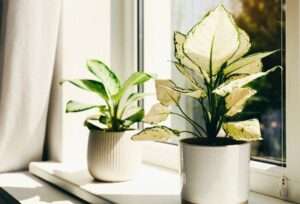
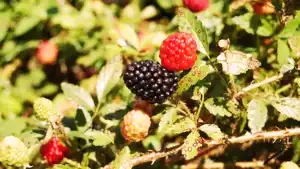
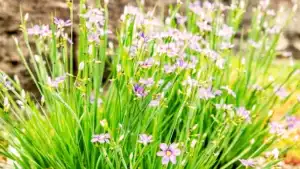
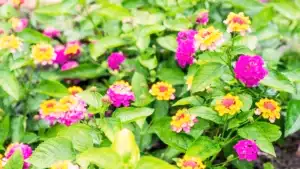
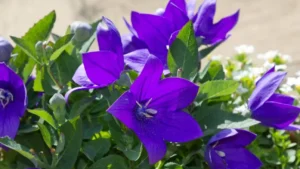
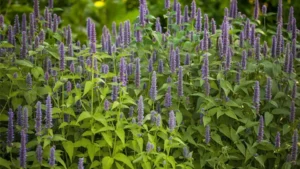
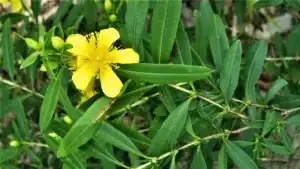

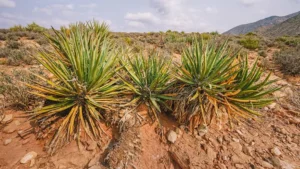
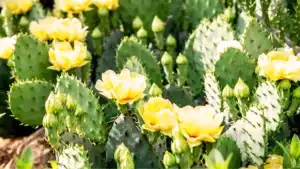


Leave your comment